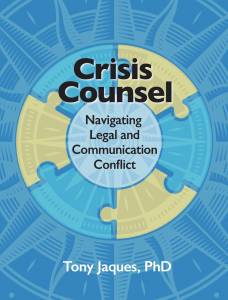Why crises get worse just when you think it’s all over
by Tony Jaques, Director of Issue Outcomes Pty Ltd, for people who work in issue and crisis management
While it’s essential to respond effectively when a crisis strikes, what happens after the crisis seems to be over can be an even greater risk to reputation and financial security.
Yet, post-crisis management is perhaps the least understood phase of the continuum, from preparation and prevention to crisis response, review, and eventual recovery.
An American academic recently suggested that post-crisis management is primarily about reflecting on what happened, along with some ongoing psychological support and a thoughtful memorial for those affected.
Such actions are helpful, but they are by no means the main issue.
Nor is the frequent emphasis on business restoration and continuity. This is undoubtedly very important, but business continuity is just one, largely tactical and usually fairly brief, element of post-crisis management.
Far more fundamental for longer-term reputation and organizational resilience is the risk associated with post-crisis proceedings such as inquests, commissions of inquiry, official investigations, prosecutions, and lawsuits, which can extend for months, years, or even decades, generating endless harmful headlines.
Unfortunately, many CEOs breathe a sigh of relief once the immediate crisis event seems to have passed, and they try to leave whatever follows to the lawyers so they can “get on with running the business.”
However, the proceedings that follow are often more damaging and far-reaching than the crisis event itself, and crisis managers and communicators must keep the executive closely focused on the ongoing risk.
Consider the catastrophic Black Saturday Australian bush fires in Victoria, Australia in October 2009, which killed 173 people and destroyed more than 2000 homes in a single afternoon. In the immediate aftermath, the news media and public were full of praise for the courageous work of firefighters, police, and other emergency responders.
But an 18-month Royal Commission, which heard heartbreaking evidence from over 400 witnesses, was scathing about many organizations and individuals. Three very senior public servants lost their jobs or resigned, and politicians had to apologize for their failures.
The reputation-sapping legal action which then followed against a power company and others involved, dragged on for five years before finally concluding with Australia’s largest ever class action settlement.
However, the mother of all post-crisis disasters has to be the massive oil spill when the tanker Exxon Valdez ran aground in Alaska in 1989. While the company’s immediate reaction became a textbook example of how not to manage a crisis, the legal response to the post-crisis lawsuits stands as a case study of what happens when lawyers take charge.
A local court originally ordered Exxon to pay $5 billion in compensation to local residents and businesses, equivalent to about its annual profit at the time. Following what one legal expert described as “scorched earth litigation” involving scores of petitions and appeals and over 1,000 legal briefs, requests, and demands, by 2008 the penalty was progressively reduced to just $507 million, plus about $480 million in interest.
By then, thousands of claimants had died waiting for the outcome, and Exxon-Mobil recorded a record-breaking annual profit of $45 billion. It was only in 2009 that the company finally gave up its last line of appeal.
The lawyers were likely pretty pleased with themselves for shaving about $4 billion from the original judgment. Yet it came at the cost of almost 20 years of continuous legal wrangling, widespread negative publicity, and reputational damage.
- Although not every post-crisis phase is as big or as dramatic as Black Saturday or Exxon Valdez, the essential steps are the same for every organization:
(1) Restore business/operations.
(2) Establish a cross-functional team, including top management and experienced communicators, to monitor and manage any legal proceedings.
(3) Review how the crisis was managed and make any amendments to the process.
But remember, the second step is by far the most important for survival and lasting success.
A Parting Thought
Character is not made in a crisis; it’s only exhibited.
– Robert Freeman
Learn more about Reputation Risk, CEO apologies, and Crisis communication in Tony Jaques’ book,
Crisis Counsel: Navigating Legal and Communication Conflict
Click HERE to find Tony’s book at Amazon.com
“Crisis Counsel confirms Tony Jacques’ position as one of the industry’s foremost experts on issues and crisis management. In addressing the complex interactions between legal and communication crisis responses, Dr. Jacques provides riveting case studies and practical advice. It highlights the financial and reputation risks of not effectively integrating communications and legal counsel. It should be on every communications practitioner’s reading list, and companies should insist their in-house and external legal counsellors read it.” – Noel Turnbull, Former Chair of Turnbull Porter Novelli, Adjunct Professor, RMIT University.
#reputationrisk #reputationmanagement #crisisresponse #tonyjaques

